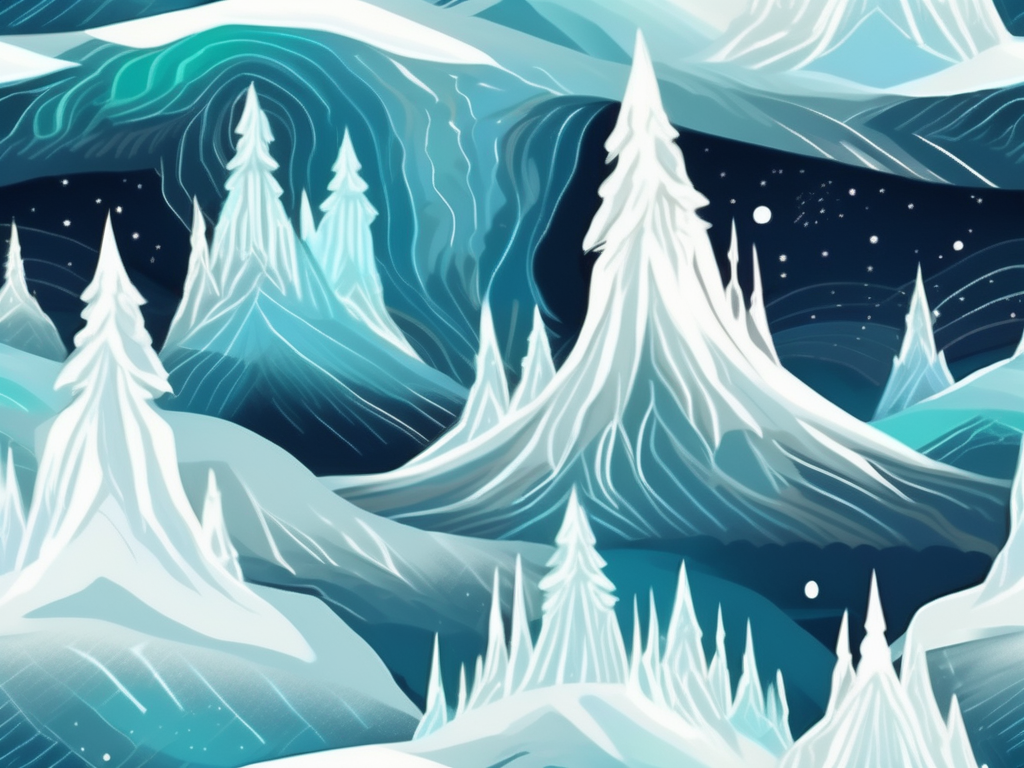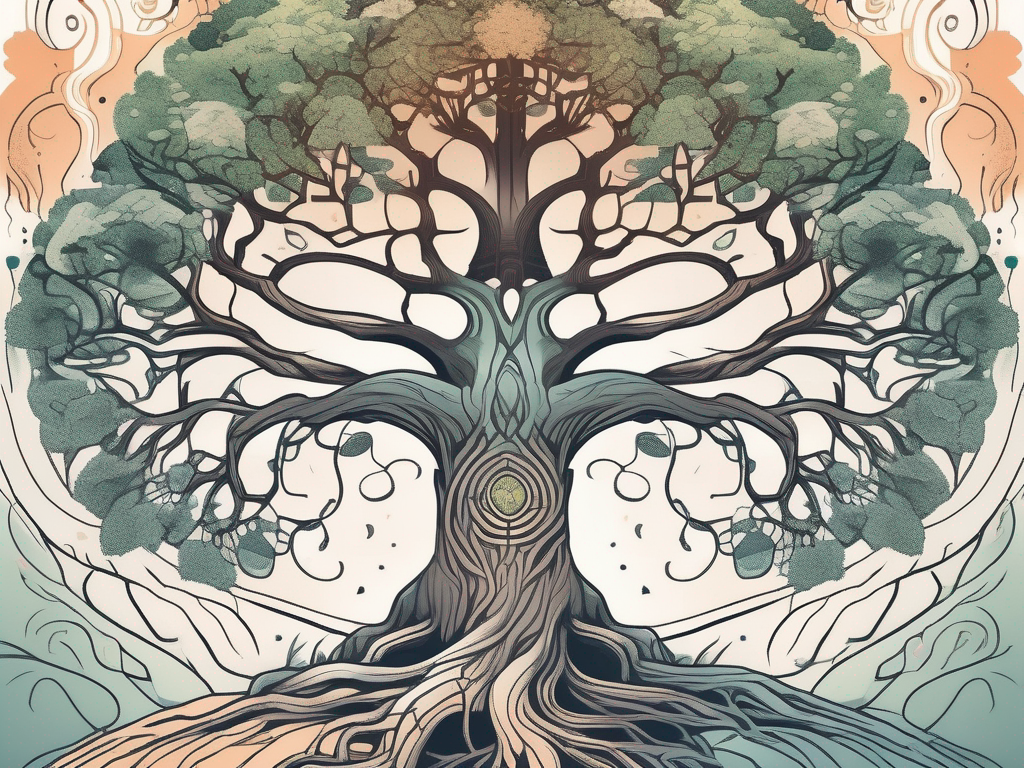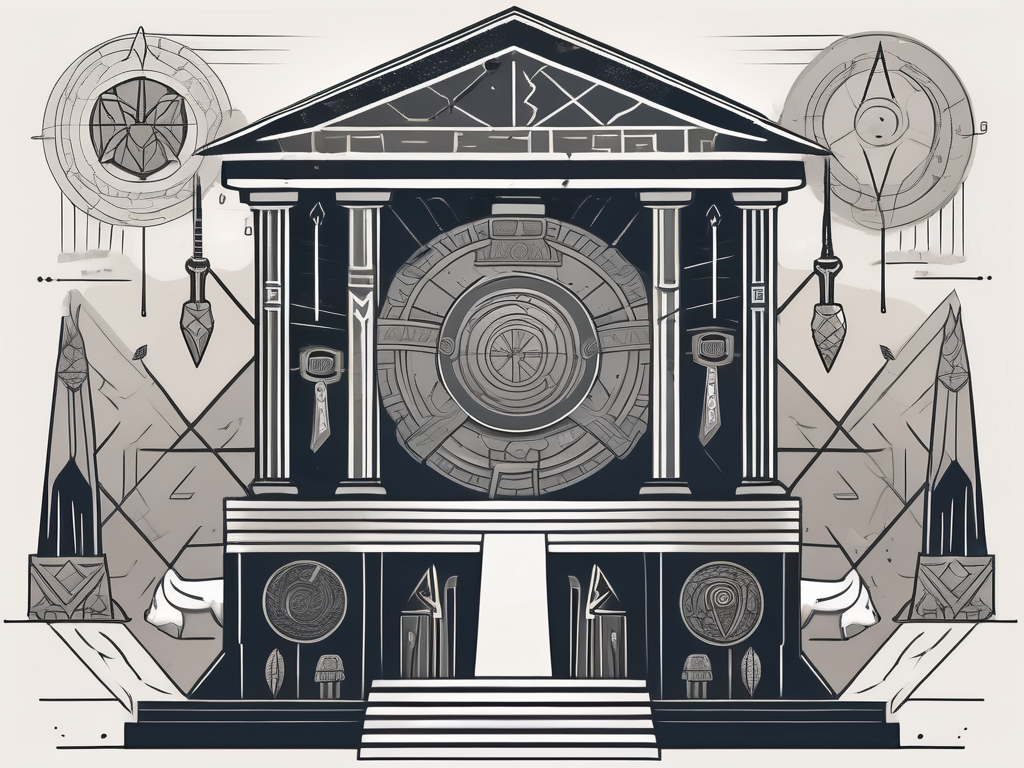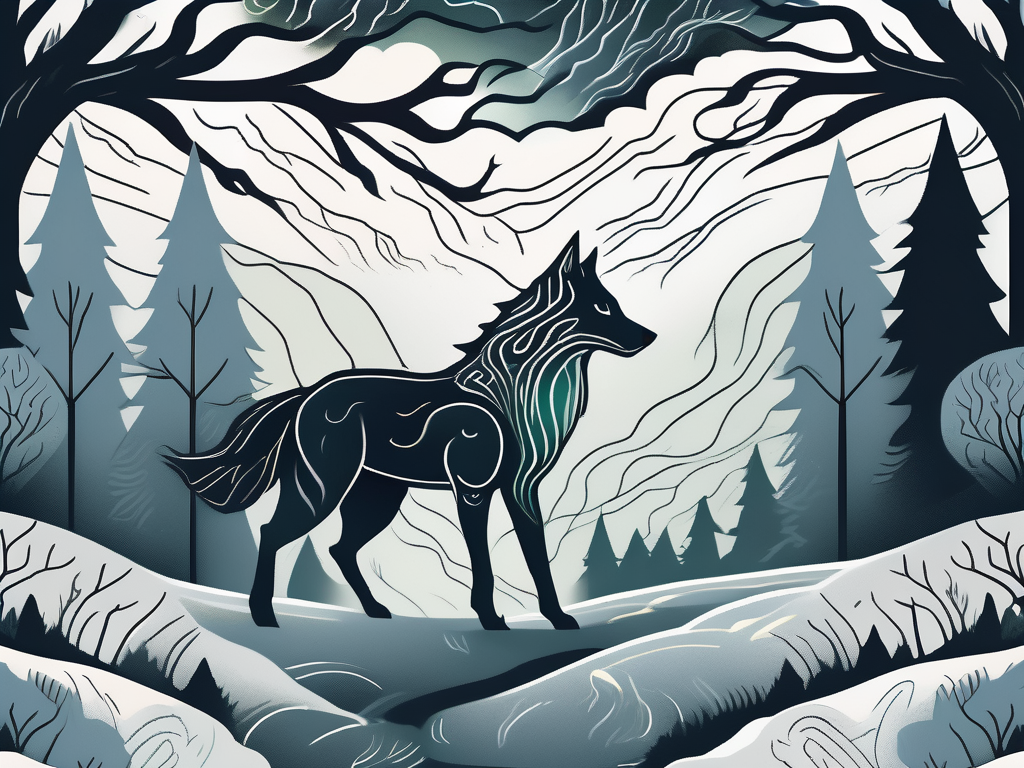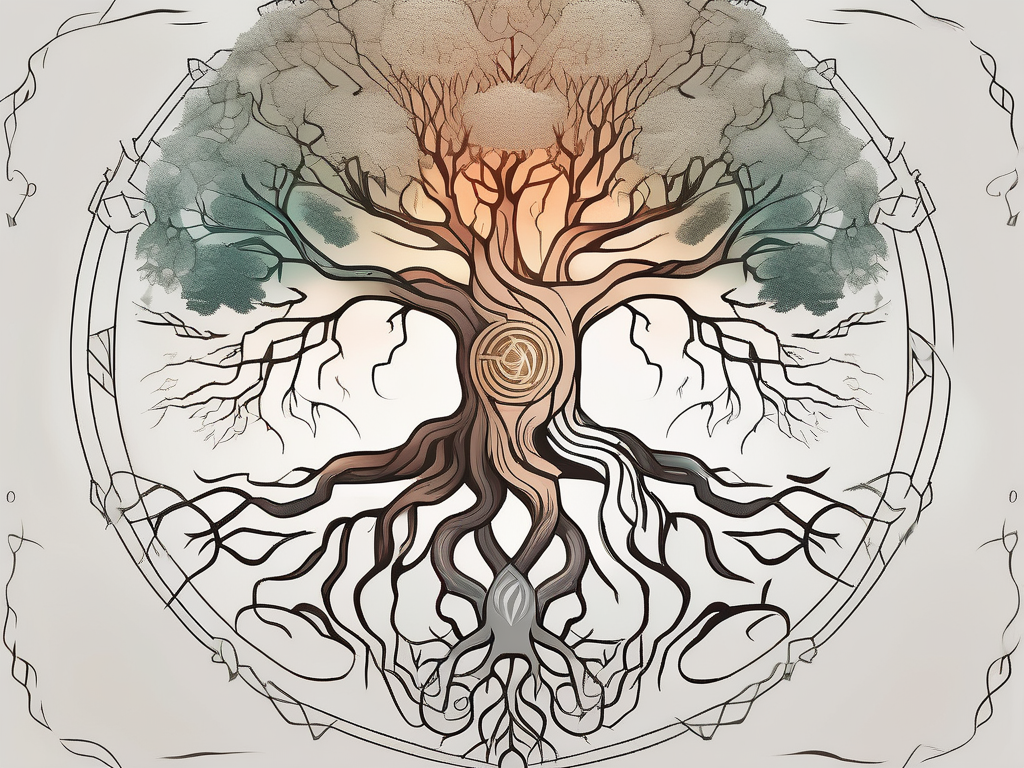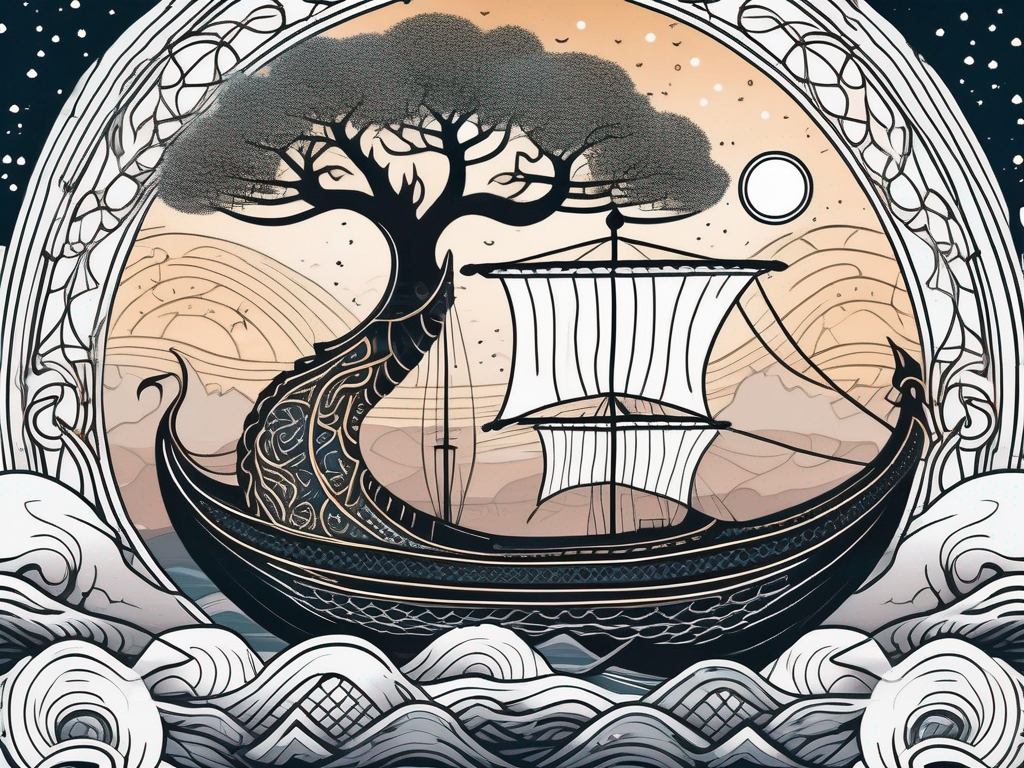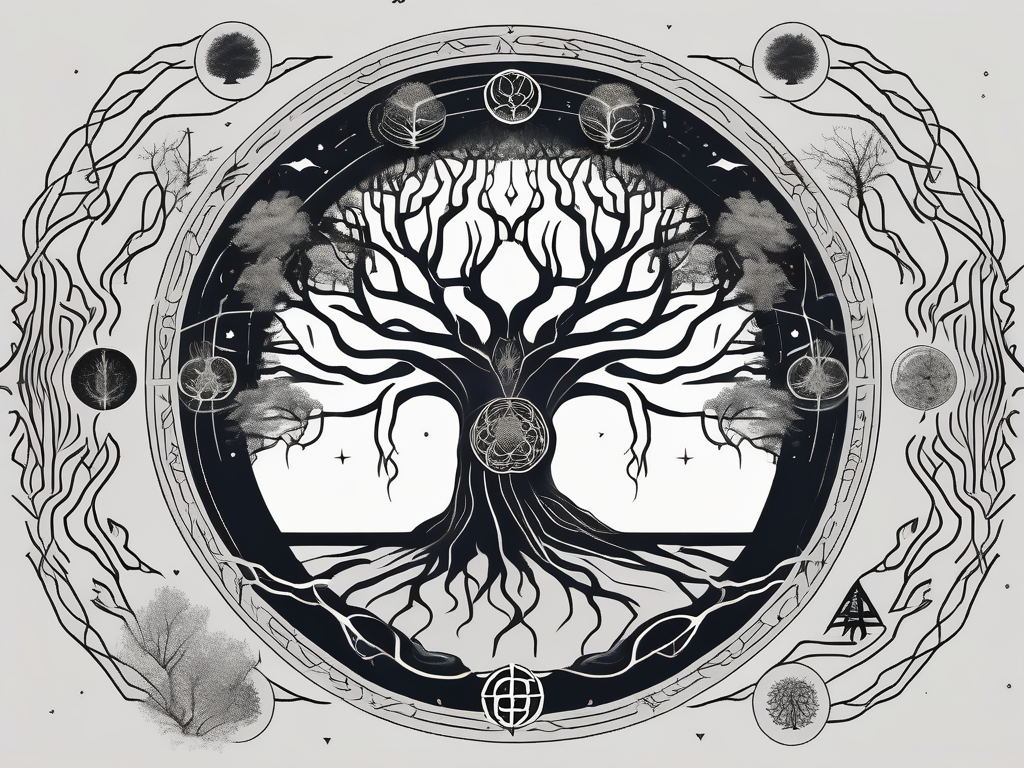Norse mythology is a rich tapestry of gods, goddesses, and fantastical creatures. Among these mythical beings are the enigmatic ice giants, whose existence has captivated the imagination of many. In this article, we will embark on a journey to uncover the truth behind these elusive creatures and explore their significance in Norse mythology and culture.
Understanding Norse Mythology
Before delving into the realm of ice giants, it is essential to have a basic understanding of Norse mythology. Originating from ancient Scandinavia, this complex belief system encompasses a vast array of stories, legends, and traditions. Norse mythology is a reflection of the Norse people’s relationship with the natural world, their gods, and the supernatural forces that governed their lives.
The Norse people, with their deep connection to nature, saw the world as a living entity. They believed that everything in nature had a spirit, from the towering mountains to the smallest blade of grass. This animistic worldview shaped their understanding of the gods and goddesses, who were seen as powerful beings that embodied the forces of nature.
The origins of Norse mythology can be traced back to the pre-Christian era when the Norse people worshiped a pantheon of gods and goddesses. These deities represented various aspects of life, such as war, fertility, wisdom, and beauty. The stories and myths surrounding these gods and goddesses provided explanations for the creation of the world, the cycles of nature, and the complexities of human existence.
One of the most revered gods in Norse mythology is Odin, the Allfather. He is the ruler of Asgard, the realm of the gods, and is associated with wisdom, knowledge, and magic. Odin is often depicted as a wise old man with a long white beard, wearing a wide-brimmed hat and carrying a spear. He sacrificed one of his eyes to gain wisdom and is known for his ability to shape-shift and travel between worlds.
Another prominent figure in Norse mythology is Thor, the god of thunder and lightning. He is the son of Odin and is known for his immense strength and bravery. Thor wields a mighty hammer called Mjolnir, which he uses to protect the gods and humans from the forces of chaos and destruction. He is often depicted as a muscular man with red hair and a beard, wearing a belt that increases his strength.
Freya, the goddess of love and beauty, is another key figure in Norse mythology. She is associated with fertility, desire, and magic. Freya is known for her stunning beauty and her ability to shape-shift into a falcon. She rides a chariot pulled by two large cats and is often depicted wearing a necklace made of amber.
The Origins of Norse Mythology
The origins of Norse mythology can be traced back to the pre-Christian era when the Norse people worshiped a pantheon of gods and goddesses. These deities represented various aspects of life, such as war, fertility, wisdom, and beauty. The stories and myths surrounding these gods and goddesses provided explanations for the creation of the world, the cycles of nature, and the complexities of human existence.
The Norse people believed that the world was created from the body of a giant named Ymir. Ymir was formed from the primordial ice of Niflheim, the realm of ice and mist. As Ymir slept, he sweated, and from his sweat, the first man and woman were created. The gods then shaped the world from Ymir’s body, using his flesh to create the land, his bones to form the mountains, and his blood to create the oceans.
Key Figures in Norse Mythology
Among the many remarkable figures in Norse mythology, gods like Odin, Thor, and Freya hold prominent positions. These gods played essential roles in shaping the cosmos, battling enemies, and interacting with humans. Additionally, other mythical creatures, such as dwarves, elves, and giants, also populate the Norse mythological landscape.
The dwarves, skilled craftsmen and miners, played a crucial role in Norse mythology. They were responsible for creating many of the gods’ most prized possessions, such as Thor’s hammer and Odin’s spear. The dwarves lived underground in their own realm, known as Svartalfheim, and were known for their exceptional craftsmanship and knowledge of magical arts.
Elves, on the other hand, were beings of beauty and grace. They were associated with the natural world and were believed to dwell in forests and meadows. Elves were known for their skill in archery and were often depicted as tall, fair-haired beings with pointed ears. They were considered protectors of nature and were believed to have the ability to heal both physical and spiritual ailments.
Giants, often depicted as towering and powerful beings, were a significant part of Norse mythology. They were seen as forces of chaos and destruction, constantly challenging the gods and threatening the stability of the cosmos. Some giants were portrayed as enemies of the gods, while others were more neutral or even friendly towards humans. The most famous giant in Norse mythology is Jotunheim, the land of the giants, which was located in the east and north of Midgard, the realm of humans.
The Role of Ice Giants in Norse Mythology
Ice giants occupy a distinct place within the Norse pantheon, bringing their unique qualities and significance to the mythology.
But what exactly is the role of these formidable beings in Norse mythology? Let’s delve deeper into their origins, characteristics, and the impact they had on the ancient Norse belief system.
The Creation of Ice Giants
According to Norse mythology, the ice giants were born from within the frozen realm of Niflheim. This icy domain was said to be located to the north, where the cold winds blew relentlessly, shaping the rugged landscapes that defined the Norse world.
From the depths of Niflheim emerged the primordial giant Ymir, the progenitor of the ice giants. Ymir was a being of immense power, embodying the raw strength and elemental force of ice. It is said that from his body, the first ice giants were born.
These formidable beings inherited their father’s strength and endurance, making them towering figures capable of bringing forth chaos and destruction. They were the living embodiment of the harsh and unforgiving nature of the northern lands, where survival meant battling against the biting cold and treacherous icy landscapes.
The Characteristics of Ice Giants
Ice giants possessed immense physical strength and endurance, which made them formidable opponents in battle. Their bodies were said to be as cold as the ice they hailed from, reflecting the harshness of the frozen landscapes they inhabited.
But it wasn’t just their physical attributes that defined them. Ice giants were often depicted as having a cold and unforgiving nature, mirroring the harsh realities of their environment. Some tales even describe them as amoral beings, driven solely by their own desires and impulses.
Yet, despite their formidable nature, ice giants were not mere mindless monsters. They played a significant role in the Norse belief system, often serving as antagonists to the gods and heroes of Norse mythology. Their clashes with these divine beings represented the eternal struggle between order and chaos, with the ice giants embodying the chaotic forces that threatened to disrupt the fragile balance of the cosmos.
Furthermore, ice giants were not just adversaries, but also served as symbols of the untamed and uncontrollable forces of nature. They represented the wild and unpredictable aspects of the natural world, reminding the Norse people of the ever-present dangers that lurked beyond the safety of their settlements.
In conclusion, ice giants held a prominent place in Norse mythology, embodying the raw power of ice and the unforgiving nature of the northern lands. Their origins, characteristics, and interactions with the gods and heroes of Norse mythology added depth and complexity to the ancient belief system, reflecting the Norse people’s understanding of the harsh realities of their environment.
Ice Giants in Norse Cosmology
Within the intricate web of Norse cosmology, ice giants played a significant role in shaping the nine worlds and contributing to the epic saga of Ragnarok.
Ice Giants and the Nine Worlds
In Norse cosmology, the ice giants inhabited Jotunheim, one of the nine worlds. Jotunheim was a realm of chaos and mystery, where the ice giants thrived amidst the icy peaks and treacherous landscapes. It was believed that the giants’ presence was instrumental in maintaining the delicate balance between order and chaos in the cosmos.
Ice Giants in Ragnarok
Ragnarok, the prophesied end of the world in Norse mythology, featured pivotal roles for the ice giants. As chaotic forces aligned against the gods and humans, the ice giants unleashed their fury, seeking to bring about the destruction of the world. This cataclysmic event marked a turning point in Norse mythology, representing the cyclical nature of life and the inevitability of change.
The Influence of Ice Giants on Norse Culture
The enduring legacy of the ice giants can be witnessed in various aspects of Norse culture, including art, literature, and contemporary interpretations.
Ice Giants in Norse Art and Literature
Artistic representations of ice giants can be found in ancient Norse carvings, manuscripts, and tapestries. These depictions often portray the giants as imposing figures, emphasizing their role as forces of nature and chaos. Through these artistic expressions, the ice giants became enduring symbols of power, resilience, and the inherent volatility of life.
The Legacy of Ice Giants in Modern Culture
While Norse mythology may have faded from mainstream beliefs, the legacy of ice giants remains embedded in popular culture. From fantasy novels to movies and video games, the allure of these mighty beings continues to capture the imagination of audiences worldwide. Their representations in different forms of media reflect humanity’s everlasting fascination with mythical creatures and the enduring power of ancient tales.
Debunking Misconceptions about Ice Giants
Like many elements of mythology, ice giants have been subject to misconceptions and misinterpretations over time.
Common Misinterpretations of Ice Giants
One common misconception is equating ice giants with frost giants, who are distinct beings in Norse mythology. While both possess an affiliation with ice and showcase immense strength, they have separate origins and roles within the mythological framework.
The Truth about Ice Giants in Norse Mythology
Understanding the truth about ice giants requires a nuanced interpretation of the source material. By diving deep into the original texts and examining the cultural context, we can gain a clearer understanding of these mythical beings and appreciate their significance within Norse mythology.
Unveiling the mythical ice giants of Norse mythology allows us to glimpse into the captivating world of ancient Norse beliefs. Through their stories, we gain insights into the Norse people’s worldview, their relationship with nature, and the timeless themes of power, chaos, and transformation. So, let us venture forth into the frost-covered realm and unravel the mysteries that lie within the realms of ice and giants.
